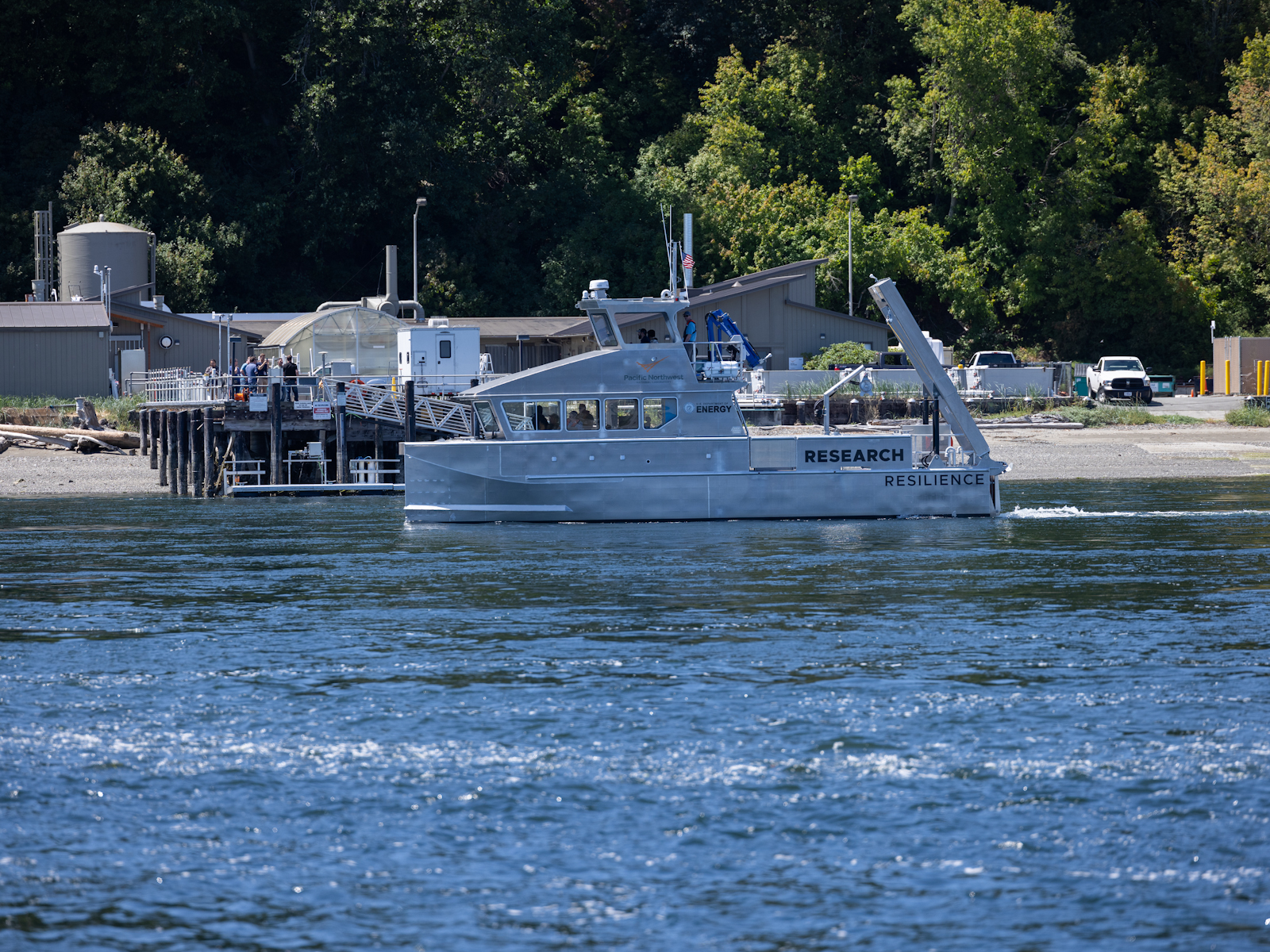SEQUIM, Wash.-The Department of Energy's first hybrid electric-diesel research vessel arrived Friday, July 19 from Seattle, docking at the John Wayne Marina.
The vessel, named RV Resilience, will be managed and operated by researchers at the Sequim campus of DOE's Pacific Northwest National Laboratory, the only marine research laboratory in DOE's complex. At 50 feet long, Resilience is the first of its size class to be partially electrified. It's big enough to fit a 113-kilowatt battery, but small enough to be nimble for research in Sequim Bay and beyond.
RV Resilience will help usher in a new era of research at PNNL-Sequim, where scientists study environmental impacts of marine energy, ocean-based carbon dioxide removal, coastal ecosystem sciences and more. Along with the new vessel, PNNL-Sequim will soon be home to new seawater experimental tanks, a climate-controlled research space on an updated pier and a new and improved space for public outreach activities.
"This research vessel is an exciting addition to our PNNL-Sequim campus and one of many capability enhancements supported by DOE's Water Power Technologies Office," said Jud Virden, Associate Laboratory Director for PNNL's Energy and Environment Directorate. "These investments in PNNL-Sequim will expand our ability to conduct coastal and oceanographic research and advance solutions for climate change, coastal resilience and national security."
Resilience can travel up to 28 knots on two main diesel engines as well as at 6 knots on the battery, often ideal for research sites. The battery can be recharged at a fast-recharging station at PNNL-Sequim.

With Resilience, researchers not only get a larger vessel but also a quieter one. While the ship uses its onboard batteries, it's nearly silent. That means less noise pollution to disturb wildlife, a better environment for taking sensitive acoustic measurements and reduced fossil fuel use. The ship's size will not only allow researchers to travel further offshore, but it will also accommodate large research equipment like remotely operated vehicles, ocean observing systems and demonstration-scale marine energy devices.
When researching how to generate power from ocean waves and tides, Resilience will also allow PNNL-Sequim researchers to conduct environmental impact testing on marine energy infrastructure developed by industry, universities and other institutions. For instance, the laboratory is currently working with the University of Washington Applied Physics Laboratory to test a new tidal energy turbine that was recently installed in Sequim Bay.
"This first-in-class electric hybrid vessel will greatly expand our R&D and testing capabilities and help us build new partnerships," said Christian Meinig, Division Director for PNNL's Coastal Sciences Division. "The large working deck and heavy lift capability will allow us to deploy and recover larger instruments and uncrewed vehicles to rapidly develop technology and deliver impact to our sponsors."






